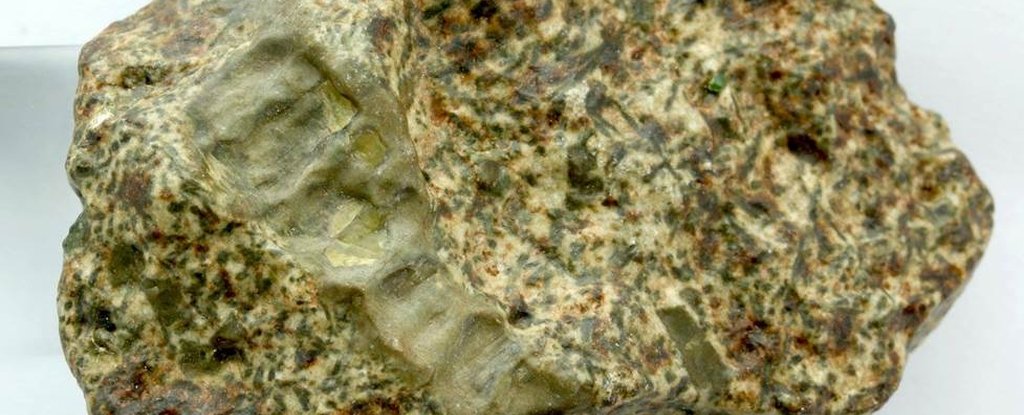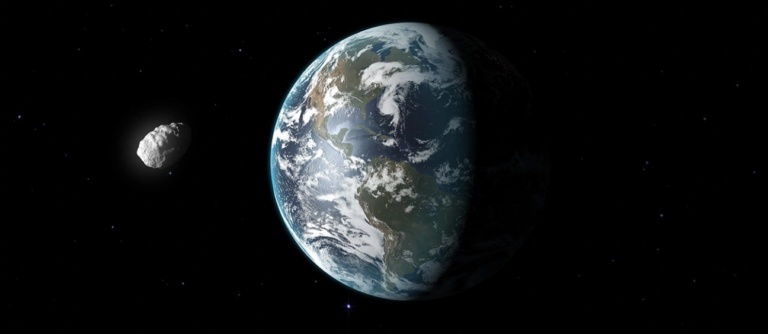Scientists have officially confirmed that this fragment of a lost protoplanet is older than Earth.
The study of Erg Chech 002, a meteorite uncovered in Algeria’s desert, looks as if it could be ashes of a failed planet whose conditions never went forward for its complete development. As part of investigating the nature of the meteorite, scientists have been able to establish its composition and age to be older than Earth and was most likely formed through volcanic process which hints at its origin as part of the surface of a protoplanet.
This revealing information opens the door to investigating the interval of planet formation and getting the pictures of those surroundings that were just starting off in the solar system, where our planets appeared.

The EC 02 rock pieces, which weighed the total of 32 kg (70 lb. ), were gained from the sand area of Erg Cheche in southwest Algeria. Unlike most meteors with a chondritic composition, these chunks look igneous with characteristic pyroxene inclusions known for extreme hardness.
With the help of the spectrometer, these fragments were categorized as achondrites, a class of meteorites believed to be of volcanic origin on a pre-planetary planet. The Meteoritical Bulletin Database shows the strong presence of achondrites, as only a small fraction of the identified meteorites (m = 3,179, out n), report achondritical meteorites.
The overwhelming majority of all achondrites are basaltic minerals from either one or two parent bodies. Due to this, it is nearly impossible to extract complete information about the protoplanets of early Solar System. Nevertheless, yet identified by a group of researchers under the leadership of geochemist Jean-Alix Barrat coming from the University of Western Brittany in France, EC 002 is an andesite igneous rock, instead the basaltic one.
Thus, the EC 002 is very different from the achondrites, being an other meteorite, so it helps get a better idea about the formation of the planets.
According to the team’s analysis, the rock is, well, ancient. Mineral formation reported to be about 4. 0 billion years ago from radioactive decay of aluminium and magnesium isotopes. from which the parent body that finally built up to 65 billion years ago. 566 billion years ago. This also implies that the meteorite would have been the oldest magmatic rock that ever had been analyzed. In this paper, the authors point out the importance of such information since it will contribute to the understanding of the early crusts of protoplanets.
As for Andesite, which is silicate mainly, the contrast is to basalt that has iron and magnesium constituting it from fast cooling lava. Andesite, which is found in the subduction zones – where tectonic plates collide – is well known for its Earth origin.
Despite the fact that andesite does not appear in meteorites often, its recent detection in the antarctic and mauritana meteorites makes special conditions more plausible. Experiment also proves that andesite could be derived from the melting of chondritic material.
Taking into account, the grand majority of chondritic objects in the Solar System, there are chances of andesite crusted protoplanets as well. Nevertheless, there was no match of the property of the meteorite EC 002 with those of asteroids in the Solar System when the team compared the spectral properties of the meteorite EC 002 with those of the asteroids.
Apart from the fact that andesitic crustal lumps in meteorite records are looking for seldom, they also do not appear frequently in the asteroid belt. And, it is a key question in case the formation process of them was really simple and had a wide occurrence.
It is highly likely that the majority of the material in the Solar System ended up in the same place: either fragments or assistant particles of the big a rocky mass. Perhaps it is the brothers of EC 002, which put in consideration its age, it is capable of creating a dense zone of amassed dust in the dust cloud that is surrounding the Sun.
The formation of planetary embryo, from the collection of rocks and dust over millions years, is known in detail, but the special details of this process stilllike are something unknown.
Through the use of the EC 002, we are able to gain first-hand experience of the initial formation condition from which our solar system evolved.
Results of this paper have been published in PNAS.
Do not forget to share your opinion with us to provide you with the best posts !




0 Comments